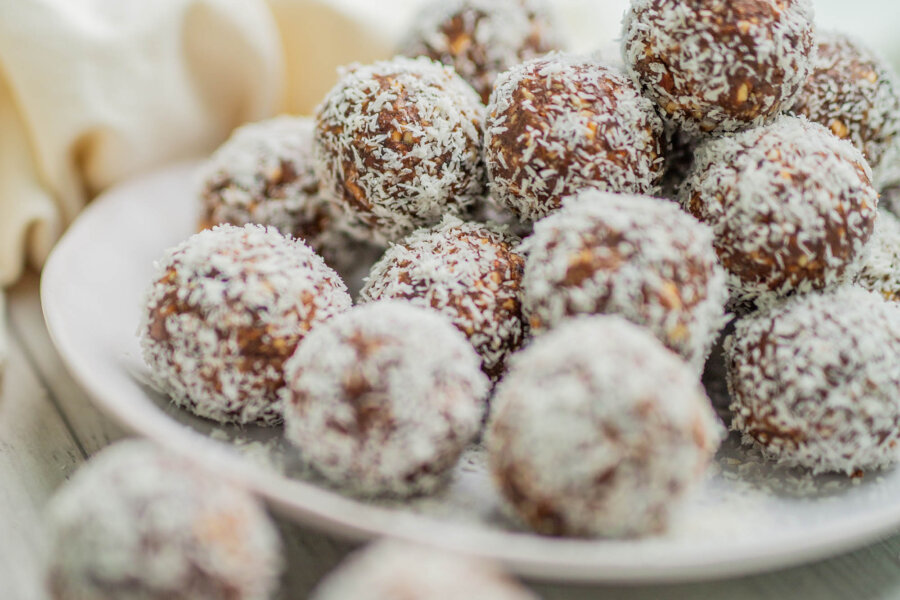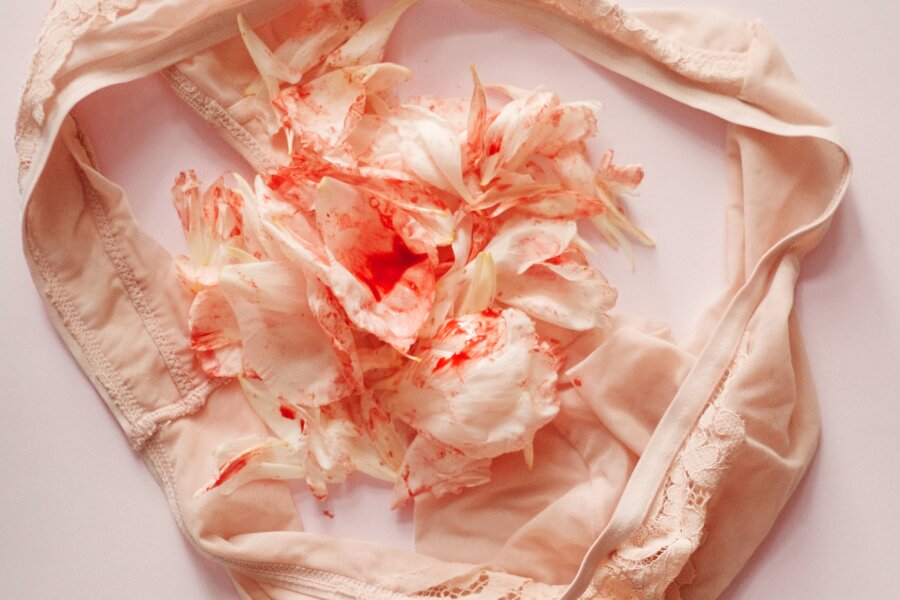If you have been following me for a while, particularly on Instagram, you will know that I have been on a mission to raise my low iron. This has been quite a challenge for me because I am unable to take any supplements. My body stopped tolerating most forms of concentrated supplements, or medications (except panadol, for some reason panadol is ok with me) following antidepressant use almost 13 years ago. You can read my article about what happened to my gut after antidepressants here.
Until recently, I have never struggled with my iron. I have been plant-based for over 10 years and never had a low iron test until after I had my baby. For this reason, I never really gave my iron much thought. However, iron needs increase significantly during pregnancy. I was unable to take supplements during pregnancy so I started to develop low iron symptoms about a year postpartum when I was still heavily breastfeeding and also menstruating. I saw the return of my period at 7 months postpartum and due to the lower progesterone levels caused by breastfeeding my periods were heavier than they were before I was pregnant. The initial pregnancy depletion, blood loss at birth, increased needs for all nutrients during breastfeeding as well as heavier menstruating meant that for the first time in my life, I was dealing with low iron. My symptoms were not severe enough to really bother me so for a long time I simply did nothing about it and expected the problem to correct itself after I quit breastfeeding, (as I expected my progesterone to go up and my periods to lighten) but although the symptoms did improve, they didn’t go away. This is when I knew I had to start looking at increasing my iron naturally.
My last blood test, taken about 6 months ago at the time I am writing this post was low serum ferritin of 20. Since I am plant-based, I expect my ferritin (this is an indicator of iron stores) to be lower. Non-heme iron (found in plants) is not easily stored in the body. Heme iron (found only in animal foods) is readily absorbed but not well regulated by the body (2). Once heme iron is ingested and absorbed the body has no mechanism to remove excess, therefore ferritin levels can increase (4). For this reason, many studies have concluded that vegetarians and vegans will usually have lower ferritin levels but are unlikely to have anemia (2) (1). There is little difference in the occurrence of iron deficiency anemia between omnivorous or plant-based women (5). Many researchers have concluded that the biggest threat to low iron among women is not a diet, but the loss of blood during menstruation (2). Researchers have also concluded that the impact of absorption “inhibitors (eg. phytates and oxalates which can inhibit the absorption of iron) and enhancers (eg. vitamin c)” is not as important as previously believed (2). Iron intake among vegetarian women can be very similar to omnivorous women, or oftentimes even greater, but ferritin levels will be lower (2)(5). There is actually a bit of evidence suggesting that a “low-normal” ferritin level is beneficial for health as high ferritin levels are associated with insulin resistance, obesity and cardiovascular disease (5) (4) (3). Heme iron has been shown to act as a pro-oxidant contributing to the development of heart disease (3). Unfortunately for me, my ferritin was not low normal, it was below normal!
I am not one to test myself at the doctor very often, so I monitored my iron symptoms on my own. My biggest indication of low iron was my post menstrual headaches. Headaches that occur during or right after your period are an indication of temporary iron loss and are not hormonal. My headaches would always come like clockwork on day four of my menstrual cycle. My headaches were pretty severe when they started, lasting about three days and sometimes even causing nausea. They got much better once I quit breastfeeding. In fact, they immediately dropped to one day instead of three days but were still fairly severe. I was also very tired and sleepy during my period which was unusual for me. This was the point where I realised the problem wouldn’t just correct itself simply because I quit breastfeeding and I started to take my iron deficiency more seriously.
Before I share all that I did to raise my low iron post-baby, I want to add that I have never drunk coffee, caffeinated tea or alcohol in my life. Caffeine and alcohol have many negative effects on the body, in particular, they can cause nutrient deficiencies. I personally believe abstaining from caffeine and alcohol is the reason my iron was always so good before pregnancy. I also want to stress that according to my blood tests I have no other underlying conditions such as a thyroid issue or other relevant deficiencies such as folate and b12 (I like this b12 spray from MyVitamins). )Since my iron was always adequate before pregnancy, it is safe to assume that I also have no underlying absorption issues in my gut. These are some underlying causes that may affect other women that have chronic low iron that should be investigated. In my case, it was simply a matter of not getting in as much iron as my body was using and losing too much iron in my monthly period.

Here is what I did to raise my low iron without supplements:
- Assessed my diet and added more iron-rich foods. For me, it was the addition of more legumes. I was already eating a fair amount of dark leafy greens, whole grains and nuts and seeds, but my diet needed more variety of legumes. I started incorporating different types of beans and lentils. This alone made a profound difference and helped my headaches reduce within a month of adding more legumes. I also made sure my diet was adequate in other nutrients that interact with iron. We often hear only about vitamin c to help iron absorption, but iron also needs beta carotene, copper, vitamin b12 and folate (15).
- I increased my magnesium intake. Many professionals now believe low magnesium (which is very common) can be an underlying root cause of persistent low iron. This is because magnesium acts on so many different systems in the body. It is particularly useful in reducing cortisol, boosting progesterone, balancing blood sugar and helping the elimination of excess estrogen from the liver and gut. All of these functions help to lighten periods. As discussed above, heavy menstruation is likely the main cause of low iron in most women. Postpartum and breastfeeding women are at a huge increased risk of low magnesium because pregnancy and breastfeeding deplete magnesium and the extra stress of the postpartum, birth and pregnancy period depletes magnesium even further (cortisol and adrenalin deplete magnesium in the body). I don’t personally tolerate oral magnesium supplements so I use a topical magnesium spray daily and aim to get about 400mg a day (which is about 20 sprays of magnesium on the thighs). My favourite brand is Amazing oils, which you can find here
- I made my own recipe for DIY iron gummies. You can find my recipe here: https://hazelandcacao.com/vegan-diy-iron-supplement-gummies/. These are gummies made with molasses which is high in iron as well as Spatone which is high in iron water from the pharmacy. I have three iron gummies a day following meals and double my iron gummies during the duration of my period.
- I started drinking an adrenal cocktail daily. Adrenal cocktails are drinks that help restore nutrients depleted under stress for the adrenal glands. They focus on vitamin c, sodium and potassium. Because they are high in vitamin c I also mixed in my liquid spa tone iron supplement mentioned above. You can read more about adrenal cocktails and find a recipe as well as a link to SpaTone here
- I started eating for my cycle and incorporating iron (and vitamin c) rich foods and meals during my menstrual period. I also stopped exercising during my period. Although I don’t exercise very much, I am sensitive to exercise and have found that any exercise beyond stretching and walking on my period is too much. There is evidence to show that high-performance athletes lose iron due to excessive exercise (14) and although I do not exercise nearly as much it is generally advisable to rest more during the period and I have found that this has made a world of difference to my overall fatigue.
- I started drinking beetroot carrot and orange juice once or twice during the week of my period. Beetroot is high in iron, carrots are high in beta carotene and oranges are high in vitamin c. beta carotene and vitamin c have been shown to help increase iron absorption (2). Beetroot is also one of the highest sources of nitrates. Nitrates are known to help build and restore red blood cells so are important to help counteract blood loss during menstruation. I also juice the leaves of the beetroot as they are even higher in iron.
- I started taking 5g Spirulina tablets daily. Spirulina is an algae that is high in many nutrients including iron. There are some studies that show iron absorption from spirulina is more effective than conventional iron supplements with no adverse side effects like constipation (6)(7). I like the spirulina tablets from MyVitamins because they contain no additives at all and are a very affordable price in comparison to other spirulina tablets on the market.
- I incorporated a small green powder coconut water smoothie every day of my period. My green powder contains a blend of spirulina, chlorella, barley grass, wheatgrass, beetroot and seaweed. All these are very high in iron. I use Super Food Powder from Eden Health Foods. Chlorella is also an algae that is very similar to spirulina but has even higher amounts of iron than spirulina. Chlorella has been shown to be beneficial in preventing anemia in pregnancy (12). Although chlorella is very high in iron, I am reluctant to take it daily as it is difficult to find good quality chlorella tablets that have their cell walls broken in order to release the nutrients and make them available. Many companies break the cell all using toxic substances such as lead so it is difficult to find a brand I trust. Chlorella is also powerful at detoxifying heavy metals from the body so I am wary of taking it as I don’t have heavy metal issues. Chlorella is also highly detoxifying and can cause digestive upset. To find out more about algae, listen to this very informative podcast here
- I started taking 4g Moringa leaf powder capsules daily. Moringa is a tree with leaves that are high in iron among many other nutrients. There are a few studies showing the effectiveness of moringa in combatting iron deficiency anemia (10)(9)(8). I personally take my moringa accompanied by an amla capsule. Amla is a berry native to India that is very high in vitamin c. Taking moringa and amla together helps to increase iron absorption while also being gentle on the stomach. Amla is the most effective form of vitamin c I have ever taken (even back when I used to be able to take synthetic supplements) one tiny amla berry which is smaller than a blueberry has the vitamin c content of 2 oranges. These are the Moringa and Amla capsules that I take daily. you can also find moringa and amla separately on the same website. I have taken them both. I suggest buying separately as I find the amla very strong so I like to dose it down, I also want more of the moringa as this is the one high in iron. I also love to use moringa powder in my smoothies and raw desserts. I use the one from DHOW nature foods. I have written a more in-depth blog post (with a recipe) on the benefits of moringa for women here
- Started drinking goji berry, raspberry leaf and nettle tea. Red raspberry leaf tea is a gentle women’s herb that is used to help tone the uterus. It acts as a mild astringent due to its tannin content and so can help reduce period flow and reduce period cramps. It is also highly nutritious and a good source of iron. Nettle is a herbal tea that is high in iron. Although I doubt very much iron would actually be present in the nettle tea, it is also thought to help facilitate iron absorption. I like to make myself any herbal tea combination I feel like and add a nettle tea bag in there too, or use loose leaf. I don’t find that it tastes like much and it pairs well with any other herbal tea variety like peppermint or chamomile. I also like to add 1-2 TBSP of goji berries into my herbal tea. Goji berries are very high in iron. Just 1/4 cup provides about 40% of all the iron you need in a day (11) I have gotten into the habit of sprinkling goji berries onto my breakfasts in the morning but also adding them into my herbal teas. I pop them in with the tea bags/loose leaf tea and let them sit. They swell with water and turn into something resembling bubble tea. They are also pleasantly sweet.
- I started using Ashwagandha herb. This tip may not be suitable for everyone but I incorporated 3g dried ashwagandha root powder in capsule form daily. Herbs are different to supplements because they come in the whole form (ie, you’re eating the whole plant not just a concentrated nutrient within a plant) so my body can tolerate herbs well provided they are in the whole form and not manipulated too much by the manufacturers. Ashwagandha is an adaptogenic herb and is known mostly for helping to lower cortisol levels effectively (16). Stress itself causes a lot of hormonal imbalances including low progesterone and estrogen dominance which can make periods heavier leading to more blood/iron loss. As someone who suffered from a severe anxiety disorder in the past and also someone who went through all that it takes to become a mum whilst also going through some ongoing stressful life changes, I found ashwagandha extremely helpful in helping me cope and deal with stress and the effects that stress had on my body. Although it is only one of the tools I used to help lower my stress, it is an important one because ashwagandha is also known to help the female body retain more iron. It also contains some iron within it.
These are the steps I took to help raise my iron post-baby without conventional supplements and without eating meat. These are things that I plan to continue doing daily for a long time, including through my next pregnancy and postpartum when the time comes. The beauty of getting enough iron through whole foods like the ones mentioned above is that your not only getting iron, your also getting a huge variety of other nutrients into your diet that can help with overall health. We are all different, and our diets are all very different, so I encourage everyone to identify the gaps in their own diets and see how they can improve upon them, for me, it was mostly eating more legumes, but for others, it may mean eating more greens. I personally am still working on adding more dried fruits like apricots into my recipes and meals because dried fruit, in general, is a good source of iron and I don’t really eat any dried fruits at all beyond dates and goji berries. Overall, although I have struggled with low iron for a while, I didn’t care to do much about it until recently. It took me about 6 months of actively trying to raise my iron to get myself to a place where I am no longer symptomatic. This is actually a very typical timeframe to raise iron even with synthetic supplements. Most experts suggest it takes 6-12 months to raise iron with conventional supplements. I am sure my iron is still on the lower end of normal so I will continue to try and raise it as best as I can.
References:
1.https://www.ncbi.nlm.nih.gov/pmc/articles/PMC5986027/
2. https://www.mja.com.au/journal/2013/199/4/iron-and-vegetarian-diets
3. https://pubmed.ncbi.nlm.nih.gov/23708150/
4. https://nutritionfacts.org/topics/heme-iron/
5. https://pubmed.ncbi.nlm.nih.gov/27880062/
6. https://pubmed.ncbi.nlm.nih.gov/30664135/
7. https://www.ncbi.nlm.nih.gov/pmc/articles/PMC4012879/
9. https://www.alanrevista.org/ediciones/2019/1/art-2/
10. https://www.sciencedirect.com/science/article/pii/S2213453016300362
12. https://link.springer.com/article/10.1007/s11130-009-0145-9
13. https://www.thequint.com/lifestyle/ek-amla-anek-faydey-one-amla-many-benefits
14. https://www.sportsdietitians.com.au/factsheets/diets-intolerances/iron-depletion/
15. https://pubmed.ncbi.nlm.nih.gov/25959209/
16. https://www.ncbi.nlm.nih.gov/pmc/articles/PMC3573577/









